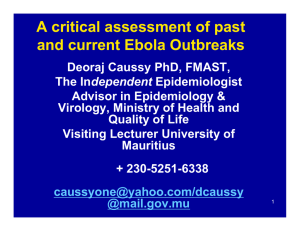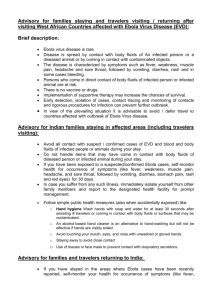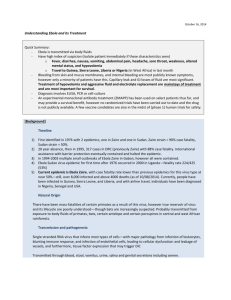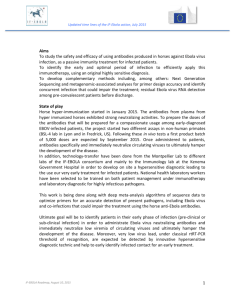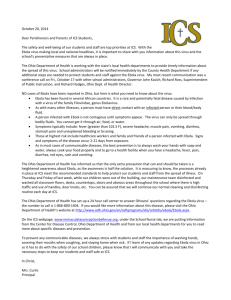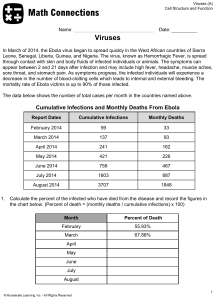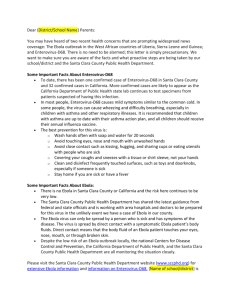Women in Agriculture and Food Security:
advertisement
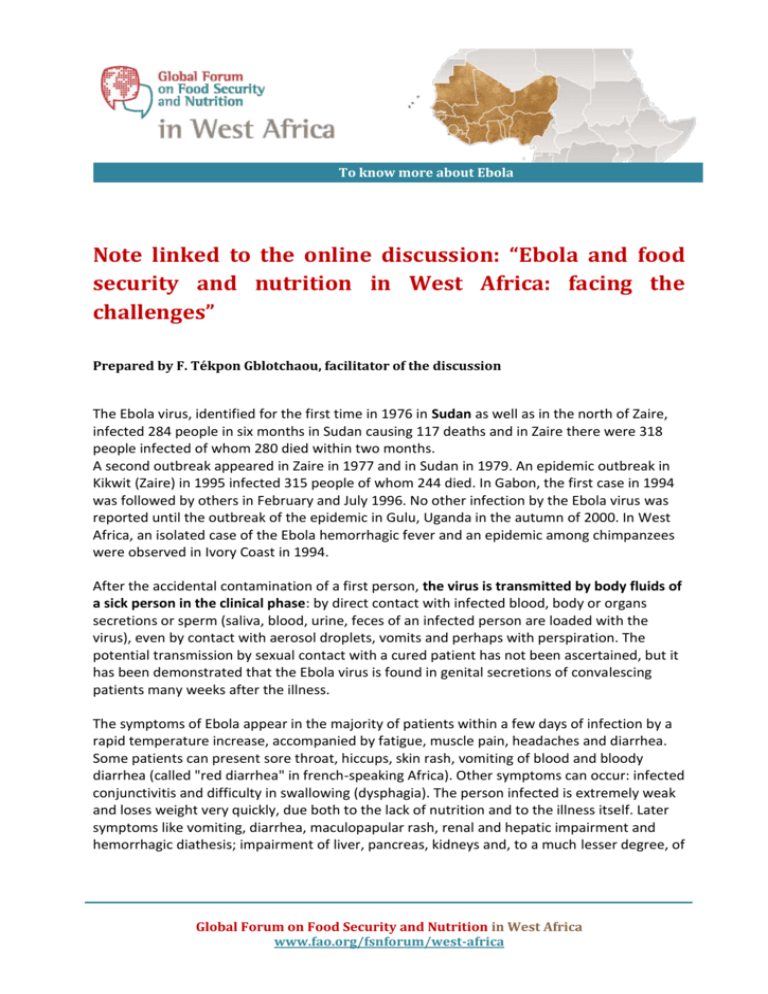
To know more about Ebola Note linked to the online discussion: “Ebola and food security and nutrition in West Africa: facing the challenges” Prepared by F. Tékpon Gblotchaou, facilitator of the discussion The Ebola virus, identified for the first time in 1976 in Sudan as well as in the north of Zaire, infected 284 people in six months in Sudan causing 117 deaths and in Zaire there were 318 people infected of whom 280 died within two months. A second outbreak appeared in Zaire in 1977 and in Sudan in 1979. An epidemic outbreak in Kikwit (Zaire) in 1995 infected 315 people of whom 244 died. In Gabon, the first case in 1994 was followed by others in February and July 1996. No other infection by the Ebola virus was reported until the outbreak of the epidemic in Gulu, Uganda in the autumn of 2000. In West Africa, an isolated case of the Ebola hemorrhagic fever and an epidemic among chimpanzees were observed in Ivory Coast in 1994. After the accidental contamination of a first person, the virus is transmitted by body fluids of a sick person in the clinical phase: by direct contact with infected blood, body or organs secretions or sperm (saliva, blood, urine, feces of an infected person are loaded with the virus), even by contact with aerosol droplets, vomits and perhaps with perspiration. The potential transmission by sexual contact with a cured patient has not been ascertained, but it has been demonstrated that the Ebola virus is found in genital secretions of convalescing patients many weeks after the illness. The symptoms of Ebola appear in the majority of patients within a few days of infection by a rapid temperature increase, accompanied by fatigue, muscle pain, headaches and diarrhea. Some patients can present sore throat, hiccups, skin rash, vomiting of blood and bloody diarrhea (called "red diarrhea" in french-speaking Africa). Other symptoms can occur: infected conjunctivitis and difficulty in swallowing (dysphagia). The person infected is extremely weak and loses weight very quickly, due both to the lack of nutrition and to the illness itself. Later symptoms like vomiting, diarrhea, maculopapular rash, renal and hepatic impairment and hemorrhagic diathesis; impairment of liver, pancreas, kidneys and, to a much lesser degree, of Global Forum on Food Security and Nutrition in West Africa www.fao.org/fsnforum/west-africa 2 Note on: Ebola and food security and nutrition in West Africa the Central Nervous System and heart; leukopenia, thrombocytopenia and raised transaminases might follow. The fevers, often fluctuating in the first days, can disappear in the terminal phase. Death is preceded by the emergence of tachypnea, hypotension, tachycardia and anuria. The little available data does not show lung impairment to explain tachypnea and the blood loss due to hemorrhages is still insufficient to explain the hypotension. Diagnosis is difficult because the early symptoms like red eyes and itching of the eyes are not specific. If someone shows the symptoms mentioned above and infection by the Ebola virus is suspected, various laboratory tests need to be carried out. There is no specific treatment or vaccination. Global Forum on Food Security and Nutrition in West Africa www.fao.org/fsnforum/west-africa



